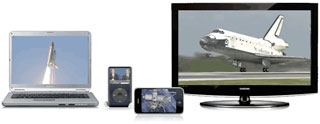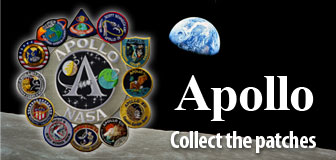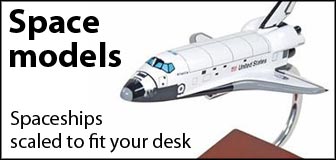'Sporty' weather greeted Discovery on final landing
BY JUSTIN RAY
SPACEFLIGHT NOW
Posted: March 9, 2011

When the shuttle Discovery swooped back to the Kennedy Space Center a year ago Friday to conclude the spaceship's flying days, commander Steve Lindsey was dealt some of the most challenging weather conditions ever experienced during an orbiter landing.
Scattered low clouds over the Florida spaceport just happened to be in the right place at the wrong time as the veteran astronaut turned Discovery onto final approach into Runway 15. Peering out the front cockpit windows, a wall of clouds completely obscured his view of the landing strip as the powerless glider descended toward its pin-point homecoming.
What's more, Discovery was flying straight into a stiff headwind gusting into the high 20 knots while heading for the northwest-to-southeast runway. Then, just before touchdown, a strong crosswind blew across the shuttle.
"We have flight rules that govern the weather for landing the space shuttle and one of the rules is the layer of clouds can't be less than 8,000 feet above the ground for landing. Unfortunately for our landing, we broke out at 3,500 feet above the ground. So we didn't see the runway until then," Lindsey recalled after the mission.
Although the commander didn't get the "field in sight" until a mere 45 seconds before touchdown, the shuttle was precisely aligned with the concrete strip for Lindsey to bring his ship on down.
"We have very good navigational aides on the space shuttle. Now we have Global Positioning System just like you might have in your car or on your mobile phone. So we knew the navigation was spot on, we knew where the runway was, we just couldn't see it. So it ended up not being a big deal."
But there was more weather to contend with.
"The bigger deal were the winds. We had a very strong headwind, but about 15 feet off the ground we picked up about a 12-knot crosswind gust. That was the biggest challenge in landing for us," Lindsey continued.
"It was a sporty day, but it was doable. The shuttle flew just fine."
The tire-smoking touchdown came at 11:57 a.m. EST, signaling the end of Discovery's spaceflight career and the start of preparations to become a museum piece at the Smithsonian.
Discovery was home from her 39th and final mission, wrapping up a life that spanned 148 million miles and orbited Earth 5,830 times.
See all of our coverage from Discovery's final mission.
On the one-year anniversary of that landing, Discovery will be towed from her hangar Friday morning and relocated to a storage bay inside the Vehicle Assembly Building to wait out the final weeks in Florida before being flown atop the modified Boeing 747 Shuttle Carrier Aircraft to the Smithsonian's National Air and Space Museum, Steven F. Udvar-Hazy Center in Virginia on April 17.
We'll have live streaming video coverage of the move, which will include sistership Atlantis coming out of the VAB and taking over the hangar Discovery is vacating. The rollarounds are scheduled to begin at 8:30 a.m. EST.
Photo credit: NASA-KSC
















|
|




















